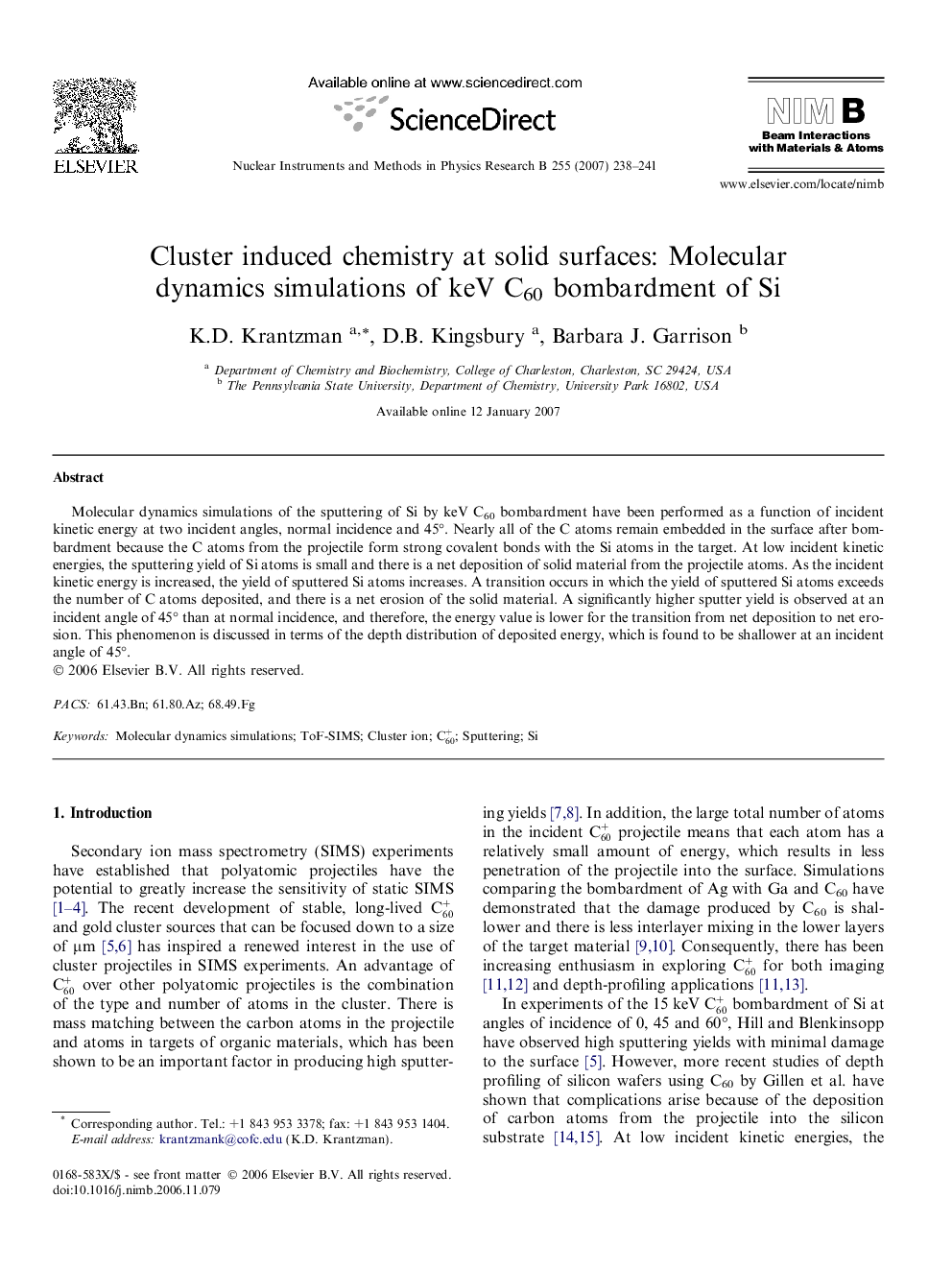| Article ID | Journal | Published Year | Pages | File Type |
|---|---|---|---|---|
| 1685968 | Nuclear Instruments and Methods in Physics Research Section B: Beam Interactions with Materials and Atoms | 2007 | 4 Pages |
Molecular dynamics simulations of the sputtering of Si by keV C60 bombardment have been performed as a function of incident kinetic energy at two incident angles, normal incidence and 45°. Nearly all of the C atoms remain embedded in the surface after bombardment because the C atoms from the projectile form strong covalent bonds with the Si atoms in the target. At low incident kinetic energies, the sputtering yield of Si atoms is small and there is a net deposition of solid material from the projectile atoms. As the incident kinetic energy is increased, the yield of sputtered Si atoms increases. A transition occurs in which the yield of sputtered Si atoms exceeds the number of C atoms deposited, and there is a net erosion of the solid material. A significantly higher sputter yield is observed at an incident angle of 45° than at normal incidence, and therefore, the energy value is lower for the transition from net deposition to net erosion. This phenomenon is discussed in terms of the depth distribution of deposited energy, which is found to be shallower at an incident angle of 45°.
